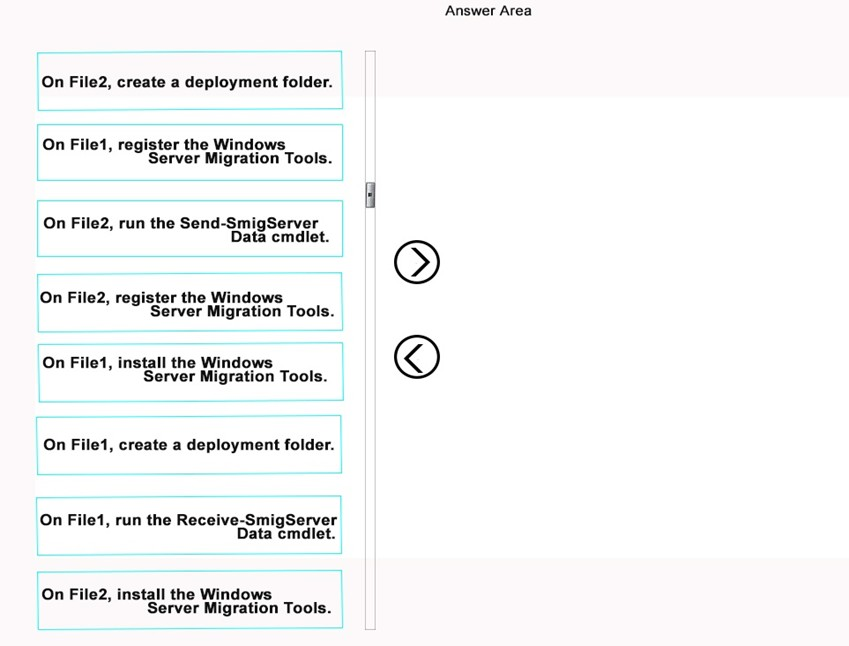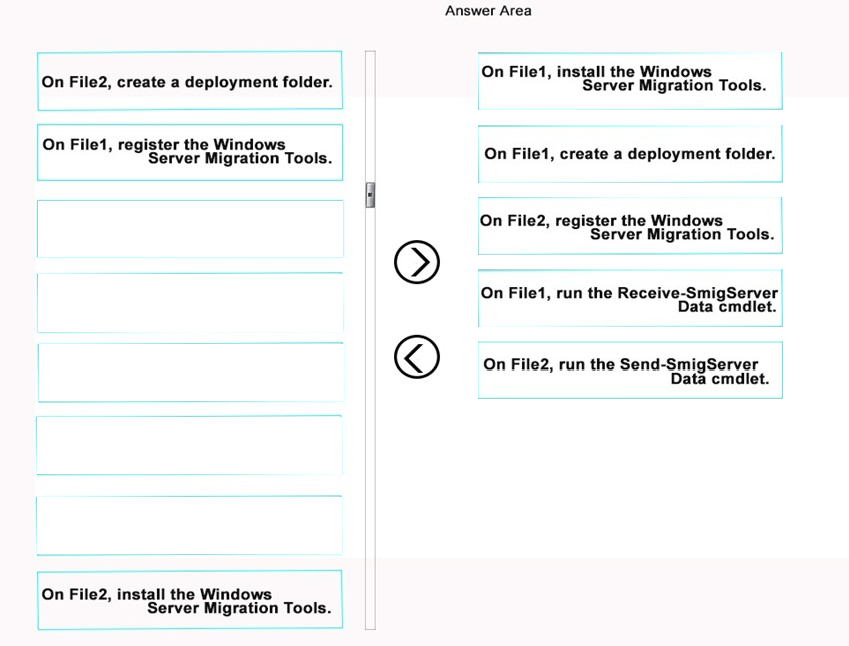

DRAG DROP -
Your network contains an Active Directory domain named adatum.com. The domain contains a file server named File2 that runs Windows Server 2008 R2.
You deploy a new member server named File1 that runs Windows Server 2012 and has the File and Storage Services server role installed.
You plan to migrate file shares from File2 to File1. File share and NTFS permissions are assigned only to global groups.
You need to identify which actions are required to perform the migration.
Which five actions should you identify?
To answer, move the appropriate actions from the list of actions to the answer area and arrange them in the correct order.
Select and Place:


NotBillGates
5 years, 4 months agoNotBillGates
5 years, 4 months ago